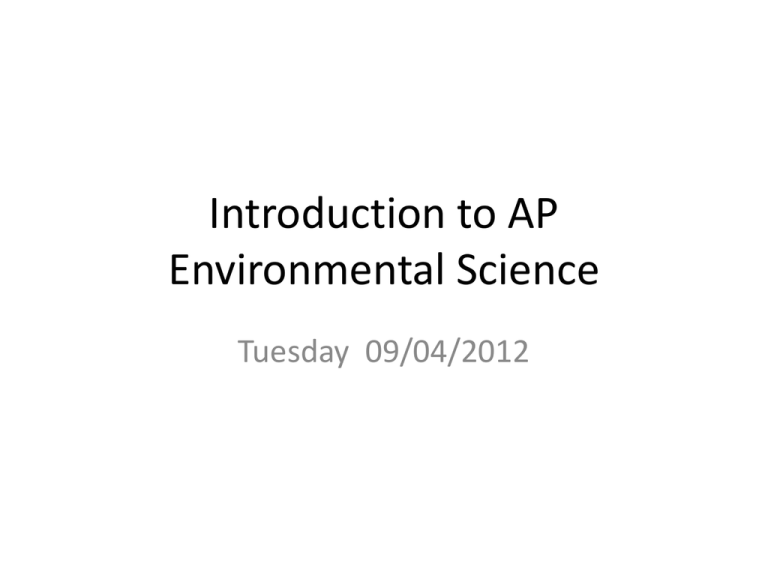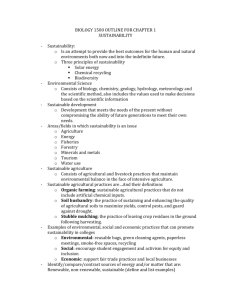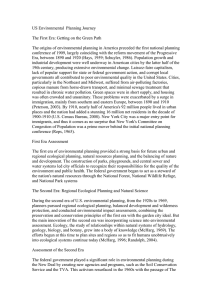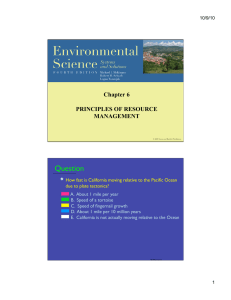Introduction to AP Environmental Science
advertisement

Introduction to AP Environmental Science Tuesday 09/04/2012 Goals for the Day 1. Be able to define sustainability and say how we can use resources to maintain their sustainability 2. Be able to discuss environmental history including specific events, people, and their importance 3. Be able to think about and discuss where wealth comes from & the major differences between developed and developing countries Question of the Day What does sustainability mean? Sustainable Yield What does sustainability mean? Renewable Resources Sustainable yield: highest rate which resources can be used indefinitely without reducing available supply Environmental degradation: when we exceed a resource’s natural replacement rate, available supply shrinks What human activities may cause this? “If I do not use this resource, someone else will. The little bit I use or pollute is not enough to matter, and such resources are renewable.” Economic Depletion Economic Depletion: when the costs of extracting and using what is left exceeds its economic value Economic Depletion What now? 1. Try to find more 2. Recycle or reuse existing 3. Waste less 4. Use less Figure 1-7 (page 10) A nonrenewable resource is considered economically depleted when 80% of its total supply has been extracted/used 5. Develop a substitute 6. Wait (millions of years) Environmental Worldviews Planetary Management We are in charge There is always more All economic growth is good and limitless Success depends on how well we can understand, control, and manage earth’s systems for our benefit Environmental Wisdom Nature does not exist just for us There is NOT always more Some technology and economic growth is environmentally beneficial, while some is harmful Success depends on learning how earth sustains itself and using how nature works into how we act U.S. Environmental History Tribal Era: Pre 1600 Frontier Era: 1600 - 1890 Conservation Era: 1832 1960 Environmental Era: 1960 present 1. The population size of India is 1,205,073,612. This gives India a population with 891,226,147 more people than the U.S. The population growth rate for India is 1.312%, while the population growth rate of the U.S. is 0.899%. A. How long will it take the population of India to double in number? B. Despite the large difference in the population density of these two countries, the environmental impact of the United States is projected to be much more than that of India. Describe at least 2 possible reasons. C. Which of these countries represent a developing country? What does this mean in terms of population, pollution output, Natural resource use, and wealth?






